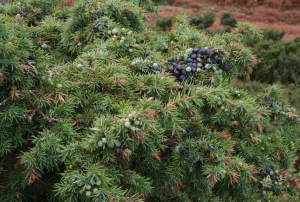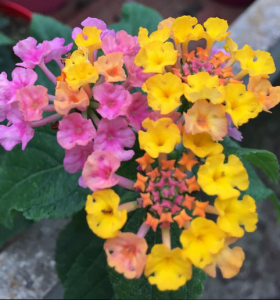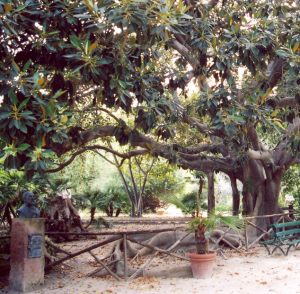This post is also available in: Italian
DISCOVERING NURSERIES: THE OUTSKIRTS OF CAGLIARI (SARDINIA/3)
Here’s the third itinerary among the Sardinian nurseries: faster than the first two suggested routes, it features three suggested nurseries, very different from each other, and shorter distances to travel around Cagliari area, in Southern Sardinia. This itinerary may start or finish ending at the Botanical Garden of the University of Cagliari, which is full of rare species and spectacular plant specimens.
You may continue your trip by following any of the two other suggested itineraries around Sardinia:
DISCOVERING NURSERIES: FROM THE NORTHERN BEACHES TO THE NURAGHI (Sardinia/1)
DISCOVERING NURSERIES: MARMILLA TERRITORY (SARDINIA/2)
including a visit to oasis and nature reserves which are abundant in this Italian Region.
The nurseries
The map shows the nurseries and other locations included in our suggested itinerary. Distances are also mentioned, in order to make it easier and more practical for you to make your choice and save petrol and time.

Antonello Atzeni Nursery: this nursery specialized in Mediterranean plants or species suitable for the gardens of Sardinia. It features an impressive collection, including unusual and suggestive juniper topiary species.
PLEASE NOTE: its GPS geolocation refers to the nearby town of Assemini, as the village of Monastir is currently not part of Google Maps.
Distances to other nurseries: 18,6 miles to La Serra Fiorita – 23,6 miles to Sgaravatti Land – 15 miles to Cagliari Botanical Garden.

La Serra Fiorita, in Assemini (CA): for more than forty years, this nursery has been cultivating and selling indoor and outdoor plants; among the latter, it offers hibiscus, myrtles, lantanas, geraniums and species of the Mediterranean scrub.
Distances to other nurseries: 24 miles to Sgaravatti Land – 18,6 miles to Antonello Atzeni Nursery – 23,3 miles to Cagliari Botanical Garden.

Sgaravatti Land, in Capoterra (CA): this nursery produces thousands of plants, mostly from the Mediterranean area, capable to adapt to the local territory and the pedo-climatic conditions, while perfectly blending themselves with the surrounding environment. Among those plants, there’s a collection of 400 varieties of Hibiscus rosa-sinensis, some of them quite rare and unusual, arranged in a colourful garden also open to occasional visitors. Another important part of the production is that of lawns, selected, in collaboration with university researchers, and capable of withstanding trampling, the typical Mediterranean climate, drought and salinity of the water, as well as requiring very little maintenance.
Distances to other nurseries: 11,8 miles to Cagliari Botanical Garden – 23,6 miles to Antonello Atzeni Nursery – 24 miles to La Serra Fiorita.

Cagliari Botanical Garden, Cagliari: the Botanical Garden of Cagliari was opened on November 15, 1866, by Patrizio Gennari, a professor of Botany at the University of Cagliari. As a clear distinction from the first similar facilities dating back to 1762-1769 (of which no traces are still visible today), it was originally named “Orto della Valle di Palabanda” after the valley floor which it covers on about 12 acres. The same spot used to be the site of a Roman amphitheatre in III AD. The current botanical garden stands on fertile land, formerly planted with vineyards, and takes advantage of the particular microclimate in this area; it hosts about 600 trees, 550 shrubs and 75 liana species, 800 potted specimens and 1.000 succulent plants, partly grown in greenhouses and partly in open fields. There are also several monumental specimen belonging, in particular, to the Ficus, Phytolacca, Dracena, Casuarina, Eucalyptus, Dasylirion and Nolina spp. genera. Visitors may also admire a wondrous specimen of Argania sideroxylon, endemic of Morocco (probably the only one growing in Italian and European Botanical Gardens), and a spectacular Euphorbia canariensis.
Gardens, botanical collections, oasis and walks along the way
Other gardens, botanical collections, oasis and similar attractions are listed on: www.italianbotanicalheritage.com. Feel free to use the comprehensive filters in the pull-down menus to explore your area of interest and discover many more interesting locations.

You shouldn’t absolutely miss Dune di Piscinas: one of the largest coastal dune systems in Europe, which extends for about 2 square miles in western Sardinia, in the municipality of Arbus. Nicknamed “the little Italian Sahara”, it has been acknowledged as a World Heritage Site by UNESCO.
A true peculiarity of the area is the presence of the wreck of an English vessel carrying lead that has been lying on the sandy bottom, not far from the shore, for over 200 years. In this fragile and unique ecosystem, the local fauna is mainly represented by Corsican red deers, Hermann’s tortoises (Testudo hermanni), and loggerhead sea turtles (Caretta Caretta); the latter have found here the ideal place for laying eggs at night, in June and July.
This post is also available in: Italian


Leave a Reply